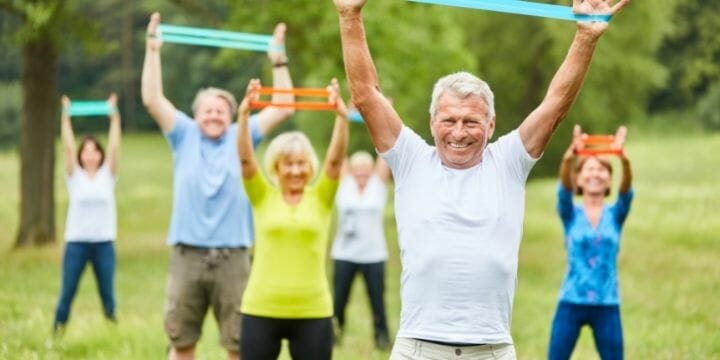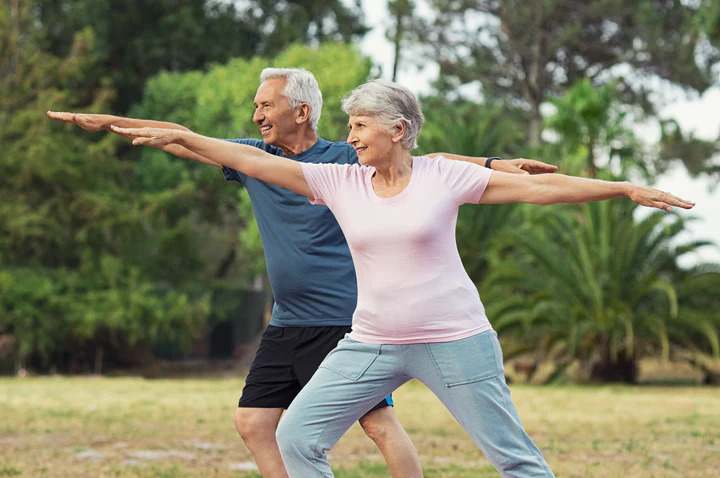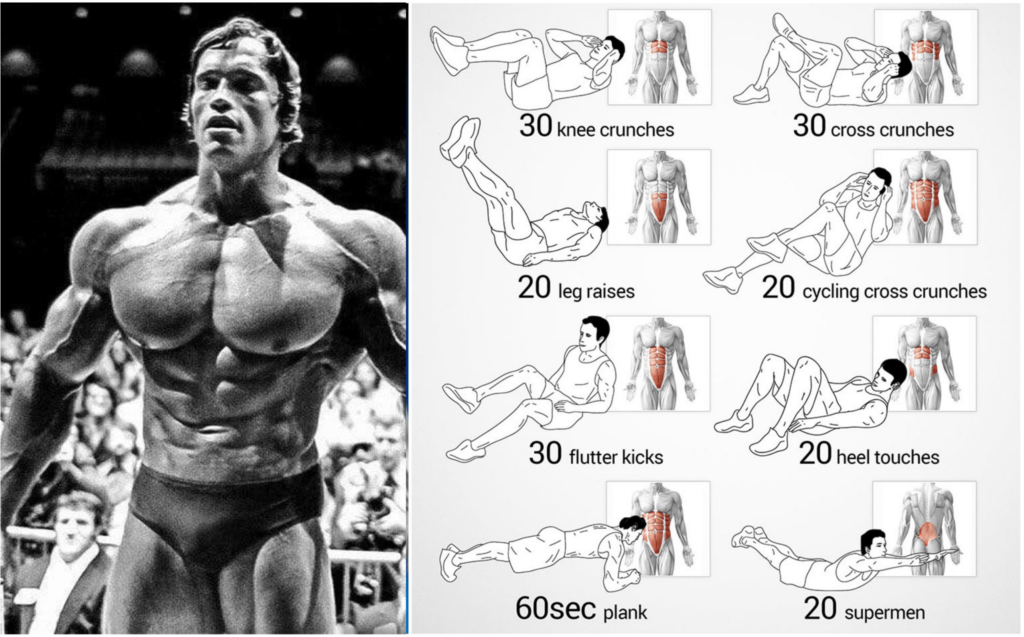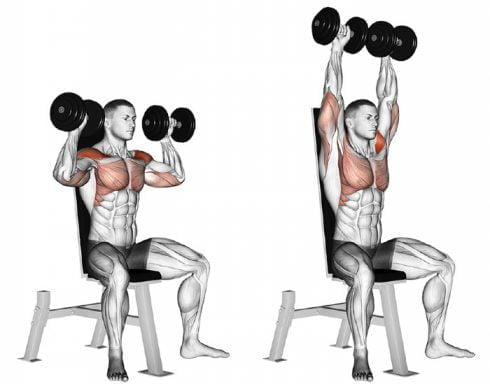Introduction
Are you ready to embrace a healthier and more active lifestyle? Look no further! In this article, we will give you the Best Exercise Routine for Seniors. Whether you’re new to exercise or have been active throughout your life, these exercises will help you stay fit, mobile, and full of vitality. Best of all, you can do them from the comfort of your own home, making it convenient and accessible for everyone. So, let’s dive in and discover a tailored exercise routine that will support your overall well-being and keep you feeling youthful and energized!
Exercise plays a vital role in maintaining good health and well-being, especially for seniors. Engaging in regular physical activity has numerous benefits that positively impact both the body and mind. Here, we will explore the importance of exercise for seniors and delve into the many advantages of incorporating a consistent exercise routine into their daily lives.
Importance of Exercise for Seniors
Regular exercise is crucial for seniors due to the following reasons:
- Enhancing Physical Health: Exercise helps seniors maintain strength, flexibility, and cardiovascular fitness. It promotes healthy aging by improving muscle tone, bone density, and joint mobility. Engaging in physical activity can also help manage chronic conditions such as arthritis, heart disease, and diabetes.
- Maintaining Independence: By improving overall physical fitness, exercise enables seniors to perform daily activities more easily, reducing the risk of falls and injuries. It enhances balance, coordination, and endurance, allowing seniors to maintain their independence and carry out tasks without assistance.
- Cognitive Benefits: Exercise has been linked to improved cognitive function and a reduced risk of cognitive decline in older adults. It enhances memory, attention, and overall brain health. Regular physical activity stimulates the release of endorphins, which contribute to a positive mood and mental well-being.
- Chronic Disease Prevention: Engaging in regular exercise can significantly reduce the risk of chronic diseases commonly associated with aging, such as heart disease, stroke, certain types of cancer, and osteoporosis. Exercise helps maintain healthy blood pressure, cholesterol levels, and weight management.
Benefits of Regular Physical Activity
Here are some key benefits that seniors can experience through regular exercise:
- Increased Energy Levels: Engaging in physical activity boosts energy levels, reducing feelings of fatigue and enhancing overall vitality.
- Improved Sleep: Regular exercise promotes better quality sleep, allowing seniors to wake up feeling refreshed and rejuvenated.
- Enhanced Mood and Mental Health: Exercise releases endorphins, the body’s natural mood-boosting chemicals, leading to reduced stress, anxiety, and symptoms of depression. It provides a sense of accomplishment and promotes social interaction, reducing feelings of loneliness and isolation.
- Weight Management: Regular physical activity, combined with a balanced diet, can help seniors maintain a healthy weight and reduce the risk of obesity-related health issues.
- Social Engagement: Participating in group exercises, fitness classes, or outdoor activities provides opportunities for social interaction and fosters a sense of community among seniors.
In summary, exercise is of utmost importance for seniors as it promotes physical health, maintains independence, improves cognitive function, prevents chronic diseases, and contributes to overall well-being. By incorporating a well-rounded exercise routine into their daily lives, seniors can experience the numerous benefits that regular physical activity offers, leading to a healthier, more fulfilling lifestyle.
Understanding Senior Fitness
Understanding Senior Fitness is crucial for designing a safe and effective exercise routine tailored to the specific needs and abilities of older adults. It involves recognizing the common physical changes and challenges that occur with aging, considering safety considerations, and seeking professional guidance when necessary.
A. Common physical changes and challenges in aging
As seniors age, they may experience certain physical changes and challenges that can impact their fitness levels. These changes can include a decline in muscle mass and strength, reduced flexibility and range of motion, decreased bone density, and changes in balance and coordination. It’s important to recognize and address these changes when designing an exercise routine for seniors.
B. Safety considerations for seniors during exercise
Safety should be a top priority when designing an exercise routine for seniors. Some key considerations include:
- Starting with a warm-up: Before engaging in any exercise, seniors should perform a gentle warm-up to increase blood flow to the muscles and prepare the body for physical activity. This can include activities like marching in place, gentle stretching, or light aerobic movements.
- Low-impact activities: Seniors should focus on exercises that are low-impact and gentle on the joints, such as walking, swimming, or cycling. These activities minimize the risk of injury while providing cardiovascular benefits.
- Proper form and technique: Seniors should be mindful of maintaining proper form and technique during exercises to avoid strain or injury. This may require starting with lighter weights or resistance bands and gradually increasing intensity as strength and stability improve.
- Balance and stability exercises: Incorporating exercises that enhance balance and stability can help reduce the risk of falls, which is a common concern for seniors. Tai chi, yoga, or specific balance exercises can improve stability and coordination.
- Monitoring intensity: It’s important for seniors to exercise at an appropriate intensity level that suits their individual fitness levels and health conditions. Listening to the body and avoiding excessive fatigue or pain is crucial. Modifying exercises or using adaptations, such as seated variations, can be helpful for those with limited mobility or specific health concerns.
C. Consulting a healthcare professional before starting an exercise routine
Before beginning any new exercise routine, seniors should consult with a healthcare professional, such as a doctor or a physical therapist. These professionals can provide personalized guidance based on the individual’s health condition, physical limitations, and any specific considerations.
A healthcare professional can help determine if there are any exercises that should be avoided or modified based on pre-existing medical conditions or injuries. They can also provide recommendations on the frequency, duration, and intensity of the exercise routine, taking into account the individual’s overall health and fitness goals.
By seeking professional guidance, seniors can ensure that their exercise routine is tailored to their specific needs and abilities, maximizing the benefits while minimizing the risk of injury or complications.
Remember, “Best Exercise Routine for Seniors” involves understanding the common physical changes and challenges in aging, prioritizing safety considerations, and seeking professional advice before starting an exercise routine.
Components of a Senior-Friendly Exercise Routine
Here are the components of a senior-friendly exercise routine:
A. Aerobic exercises for cardiovascular health

Aerobic exercises are crucial for seniors as they help improve cardiovascular health, increase endurance, and maintain a healthy weight. Some of the best aerobic exercises for seniors include:
- Walking: Walking is a low-impact activity that can be easily incorporated into a daily routine. It promotes heart health, strengthens bones, and improves overall fitness.
- Swimming: Swimming is a great option for seniors as it is gentle on the joints while providing a full-body workout. It improves cardiovascular fitness, muscle strength, and flexibility.
- Cycling: Cycling, whether outdoors or on a stationary bike, is a low-impact exercise that enhances cardiovascular endurance, leg strength, and joint mobility.
For seniors with mobility issues or limited ability to perform traditional aerobic exercises, chair exercises and seated aerobics can be beneficial. These exercises involve rhythmic movements while sitting and can include activities like seated marching, arm circles, and leg extensions.
B. Strength training exercises to maintain muscle mass and bone density

Strength training is essential for seniors to maintain muscle mass, improve bone density, and prevent age-related muscle loss. It also aids in maintaining balance and preventing falls. Some suitable strength training exercises for seniors include:
- Resistance band exercises: Resistance bands provide gentle resistance that can be easily adjusted based on individual strength levels. They help build muscle strength without putting excessive strain on joints.
- Light weightlifting: Using light weights or dumbbells, seniors can perform exercises like bicep curls, shoulder presses, and squats to strengthen major muscle groups.
It’s crucial for seniors to start with lighter weights and gradually increase the intensity as their strength improves. Consulting a fitness professional can ensure proper form and guidance.
C. Flexibility and balance exercises for improved mobility and fall prevention

Flexibility and balance exercises are vital for seniors to maintain mobility, prevent injuries, and improve overall stability. These exercises include:
- Stretching exercises: Gentle stretching exercises, such as neck rotations, shoulder rolls, and leg stretches, help improve flexibility and joint range of motion.
- Yoga or tai chi: Yoga and tai chi are excellent options for seniors to improve balance, flexibility, and mental well-being. They involve slow, controlled movements, deep breathing, and mindfulness.
D. Incorporating functional exercises for daily activities

Functional exercises focus on improving strength, flexibility, and coordination for activities that seniors perform in their daily lives. Examples include:
- Activities of daily living (ADL) exercises: These exercises mimic tasks like getting up from a chair, reaching for objects, or climbing stairs. They help maintain independence and functionality.
- Balance exercises specific to daily tasks: Seniors can practice activities like standing on one leg while brushing their teeth or balancing on a foam pad while performing light tasks. These exercises enhance stability and reduce the risk of falls.
By incorporating these components into a senior-friendly exercise routine, older adults can experience improved cardiovascular health, increased muscle strength, enhanced flexibility and balance, and greater functional capacity for their daily activities. Remember to start gradually, listen to your body, and consult a healthcare professional before beginning any new exercise program.
Designing an Exercise Routine
Designing an exercise routine that is suitable for seniors involves several key considerations. Here’s a comprehensive answer addressing each aspect:
A. Setting Realistic Goals and Starting at an Appropriate Fitness Level
When creating an exercise routine for seniors, it’s important to set realistic goals that align with their individual capabilities and health conditions. Begin by assessing their current fitness level, taking into account any medical restrictions or physical limitations.
Consult with a healthcare professional, such as a doctor or a certified fitness trainer experienced in working with seniors, to ensure the exercises chosen are safe and appropriate. Setting achievable goals helps seniors maintain motivation and track their progress as they gradually improve their fitness.
B. Creating a Schedule and Finding Motivation
Establishing a regular exercise schedule is crucial for consistency. Choose specific days and times each week dedicated to physical activity. This helps seniors develop a routine and makes it easier to prioritize exercise. To enhance motivation, it can be helpful to find a workout partner or join a seniors’ exercise group for added support and social interaction. Additionally, finding activities that seniors enjoy and look forward to can significantly increase their motivation to participate in the exercise routine.
C. Progressing Gradually and Listening to Your Body
Seniors should approach exercise with caution and progress gradually to avoid injury or overexertion. Start with low-intensity exercises and gradually increase the duration, intensity, or resistance as fitness levels improve. Paying attention to the body’s cues is vital.
Seniors should be encouraged to listen to their bodies and modify their routines if they experience pain, excessive fatigue, or discomfort. It’s essential to strike a balance between pushing boundaries for improvement and respecting the body’s limits to ensure a safe and effective exercise routine.
D. Incorporating Variety and Modifying Exercises If Needed
To keep the exercise routine engaging and enjoyable, incorporate a variety of activities that target different aspects of fitness. This may include aerobic exercises, strength training, flexibility exercises, and balance training. Aerobic activities like walking, swimming, or cycling promote cardiovascular health.
Strength training exercises, using resistance bands or light weights, help maintain muscle mass and bone density. Flexibility exercises like stretching and activities such as yoga or tai chi enhance mobility and balance. It’s important to modify exercises based on individual abilities and needs. For example, chair exercises or seated variations of exercises can be suitable for seniors with limited mobility.
Remember, the best exercise routine for seniors is one that is personalized, safe, and enjoyable. It’s essential to consult with healthcare professionals and adapt the routine as needed to accommodate individual abilities and any existing health conditions.
Safety Guidelines for Senior Exercise
When it comes to designing the best exercise routine for seniors, safety is of utmost importance. Here are some essential guidelines to ensure a safe and effective workout:
- Consult with a Healthcare Professional: Before starting any exercise routine, it is crucial for seniors to consult with their healthcare provider. They can assess individual health conditions, provide specific recommendations, and address concerns or limitations.
- Warm-Up and Cool Down: Always begin your exercise session with a proper warm-up to prepare your muscles and joints for activity. This may include light cardiovascular exercises like brisk walking or gentle arm and leg movements. Similarly, cool down with stretches and slower movements to gradually decrease your heart rate and prevent muscle soreness.
- Start Slow and Progress Gradually: Begin your exercise routine at an appropriate fitness level, considering your current capabilities and any pre-existing conditions. It’s important to start slowly and gradually increase the intensity, duration, or resistance of your exercises over time. This allows your body to adapt and reduces the risk of injury.
- Focus on Proper Form and Technique: Pay close attention to maintaining proper form and technique during exercises. This ensures that you target the intended muscles and joints while minimizing strain on other areas. If you’re unsure about the correct form, consider working with a qualified fitness professional or attending group classes tailored to seniors.
- Stay Hydrated: Seniors are more prone to dehydration, so it’s essential to drink plenty of water before, during, and after exercise. Dehydration can lead to fatigue, dizziness, and other health complications. Keep a water bottle nearby and take regular sips to stay adequately hydrated.
- Listen to Your Body: One of the keys to a safe exercise routine is listening to your body. Pay attention to any pain, discomfort, or unusual symptoms during or after exercise. If something doesn’t feel right, modify the exercise or stop and consult with your healthcare provider.
- Avoid Overexertion: While it’s important to challenge yourself, pushing too hard can lead to injury or exhaustion. Find a balance between challenging yourself and respecting your body’s limits. If you experience excessive fatigue, shortness of breath, or chest pain during exercise, stop immediately and seek medical attention.
- Modify Exercises if Needed: Understand that not all exercises may be suitable for everyone. Modify exercises based on your individual needs and capabilities. For example, using a chair for stability during strength exercises or opting for low-impact variations of aerobic activities like swimming or cycling can reduce joint stress.
Remember, these safety guidelines are general recommendations, and it’s essential to tailor them to your specific health needs and abilities. The guidance of a healthcare professional or qualified fitness instructor can be invaluable in developing the best exercise routine for seniors that prioritizes safety and maximizes health benefits.
Tips for Staying Active Outside of the Exercise Routine
Staying active outside of your regular exercise routine is just as important for seniors. It helps maintain an active lifestyle and promotes overall well-being. Here are some valuable tips to help you stay active throughout your day:
- Incorporate physical activity into daily routines: Look for opportunities to add movement to your daily activities. For example, instead of taking the elevator, opt for the stairs, or park your car a bit farther from your destination to get some extra walking in. These small changes can make a big difference in staying active.
- Engage in social activities and group exercises: Joining social groups or exercise classes specifically designed for seniors can be an excellent way to stay active and meet new people. Look for local community centers or senior centers that offer activities like dancing, group walks, or water aerobics. These activities provide both physical and social benefits.
- Explore alternative activities for enjoyment and variety: Sometimes, sticking to the same exercise routine can become monotonous. To keep things interesting, try exploring different activities that align with your interests. Consider activities like gardening, golfing, dancing, or even taking up a hobby that involves movement, such as yoga or tai chi. The key is to find activities that you enjoy and that keep you moving.
- Embrace household chores as physical activity: Engaging in household chores can be an effective way to stay active. Activities such as sweeping, vacuuming, gardening, and washing dishes involve movement and can contribute to your overall physical activity levels. Consider breaking up your chores into smaller sessions throughout the day to maintain an active lifestyle.
- Set activity goals: Establishing specific activity goals can help you stay motivated and track your progress. It could be as simple as aiming for a certain number of steps per day or dedicating a specific amount of time to physical activity each week. Setting goals provides a sense of accomplishment and keeps you focused on staying active.
- Take regular breaks from sitting: Prolonged periods of sitting can be detrimental to your health, especially for seniors. Make it a habit to take regular breaks from sitting. Set a timer or use a reminder app to prompt you to stand up and move around every hour. Simple activities like stretching, walking around the house, or doing light exercises can help counteract the negative effects of sitting.
- Explore outdoor activities: Spending time in nature can have numerous health benefits. Consider outdoor activities such as walking in the park, hiking, gardening, or playing a sport like golf or tennis. Outdoor activities not only provide physical exercise but also allow you to enjoy the fresh air and the beauty of nature.
- Practice mindfulness and relaxation techniques: Incorporating mindfulness and relaxation techniques into your routine can help reduce stress and improve overall well-being. Activities such as meditation, deep breathing exercises, or gentle yoga can be done at home or in a quiet outdoor setting. These practices contribute to a balanced and healthy lifestyle.
Remember, staying active outside of your exercise routine doesn’t have to be complicated. By making small adjustments and finding activities that you enjoy, you can continue to lead an active and fulfilling life.
FAQs
Q: What is the best exercise routine for seniors?
Ans: The best exercise routine for seniors is one that combines aerobic exercises, strength training, flexibility and balance exercises, and functional movements. This well-rounded approach helps improve cardiovascular health, maintain muscle mass and bone density, enhance mobility, and reduce the risk of falls.
Q: How often should seniors exercise?
Ans: Seniors should aim to exercise at least 150 minutes per week, spread over several days. This can be achieved through 30 minutes of moderate-intensity aerobic exercise, such as brisk walking, on most days of the week. Additionally, seniors should incorporate strength training exercises two to three times a week and flexibility and balance exercises regularly.
Q: Are there any specific exercises seniors should avoid?
Ans: While exercise is beneficial for seniors, it’s important to avoid exercises that may put excessive strain on joints or pose a higher risk of injury. Seniors should consult with a healthcare professional to determine any exercises they should avoid based on their individual health conditions or limitations.
Q: Can seniors start an exercise routine if they have never exercised before?
Ans: Yes, seniors can start an exercise routine even if they have never exercised before. It’s advisable to begin slowly and gradually increase intensity and duration over time. Consulting with a healthcare professional is recommended to ensure a safe and suitable starting point.
Q: How can seniors stay motivated to exercise regularly?
Ans: Seniors can stay motivated by setting realistic goals, finding activities they enjoy, varying their exercise routine, and seeking social support. Engaging in group exercises or finding a workout buddy can provide accountability and make exercise more enjoyable.
Q: Can seniors modify exercises if they have physical limitations?
Ans: Yes, seniors can modify exercises to accommodate physical limitations or health conditions. It’s important to listen to the body and make adjustments as needed. Consulting with a healthcare professional or working with a qualified fitness professional can provide guidance on appropriate modifications.
Q: How long does it take to see the benefits of regular exercise for seniors?
Ans: The benefits of regular exercise can vary for each individual. However, with consistency and adherence to an appropriate exercise routine, seniors may start experiencing improvements in cardiovascular fitness, strength, flexibility, balance, and overall well-being within a few weeks to a few months.
Q: Can seniors incorporate exercise into their daily activities?
Ans: Yes, seniors can incorporate exercise into their daily activities. Taking the stairs instead of the elevator, going for short walks, gardening, or engaging in household chores that involve movement are all ways to stay active throughout the day.
Conclusion
In conclusion, the best exercise routine for seniors is a personalized and well-rounded approach that encompasses aerobic exercises for cardiovascular health, strength training for muscle mass and bone density, flexibility and balance exercises for mobility and fall prevention, and functional exercises for daily activities. It’s important to consult with a healthcare professional, set realistic goals, and progress gradually. By prioritizing safety, staying active, and embracing a variety of activities, seniors can enjoy the numerous benefits of regular exercise and maintain a healthier and more fulfilling life.

Good day, and welcome to Fitthour. My name is Shubham Vijay, and I am a certified personal trainer and nutrition coach with 6 years of experience in the fitness industry. At Fitthour, we specialize in types of training, such as strength training, cardio, or HIIT, and our mission is to help clients achieve their fitness goals and improve their overall health.




